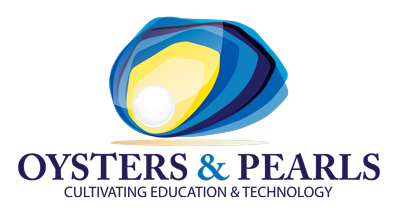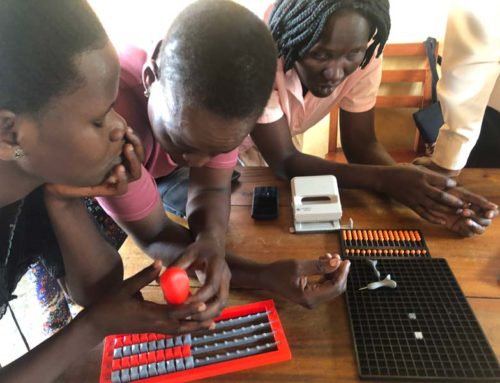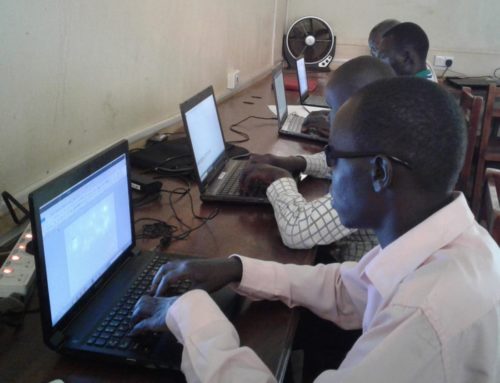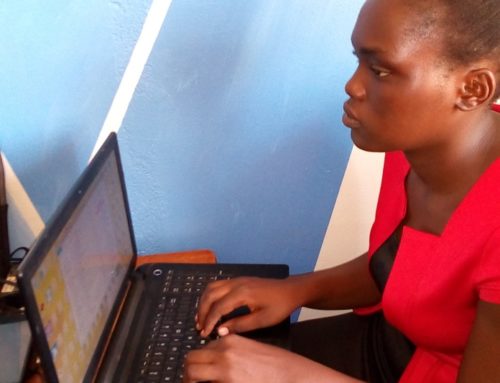When I came to Gulu High School last January, my first task as a Peace Corps volunteer was to identify areas of need in the school. After a number of conversations with different administrators and teachers, it was obvious that while there had been valuable efforts to make accommodations for the students with visual impairments, there were still many ways that these students were not on an equal playing field with the sighted students. There was a Braille embosser (to "print" Braille documents), a computer lab and a very dedicated Head of the Special Needs Department (Odoch Daniel).
However, Daniel explained to me that there was no math teacher for the visually impaired students. Instead, they were placed into the class for sighted students where the lectures were predominantly visual, and it was effectively impossible for a visually impaired student to follow. It would have been possible to incorporate visually impaired students in a lecture to a class of perhaps 20 or 30 students, but when you have 90 students in a class (as is common across Uganda) it is incredibly difficult to accommodate students with special needs in your lessons.
And so the students focused on their other classes and routinely failed their national math examinations. This is particularly upsetting because a number of career paths require a passing score on the math exam, so these career options were denied to our students because of lack of staff and resources.
I immediately agreed to work with the S4 and S3 students (the ones taking their national exams this year, and the year below). I set to work learning Braille and translating the S1 math text so that we could start from the beginning.
There are many memories that will stick with me once I leave Africa, but one of my favorites will be the first time I met my four math students. Daniel explained to them that they finally had a math teacher to help them pass their national exams, and the looks of hope and gratitude on their faces almost made me choke up.
Working with them has been in some ways a teacher’s dream. It is difficult and requires a lot of patience to figure out how to explain things in a way that crosses the boundaries of culture and sightedness. But the students are so hungry to learn that even on the days when I feel discouraged, their optimism motivates me again.
One example of trouble crossing these boundaries is when we were learning about different types of angles. I was trying to give them mnemonics to remember which was which, and I said "Obtuse angles are big, like an obese person. Obtuse is like obese." They looked at me blankly, and then I realized first I would have to explain the idea of someone eating so much that they became obese. I tried approaching it from the other side. "Acute angles are little. You can remember them because it is like how little animals are cute. Acute is little and cute." Again, the same blank look. I mentioned something about cute kittens and bunnies, and finally one of them said to me politely "Madam, we are not familiar with this concept." Some days you just have to laugh.
On the other hand, when you are explaining a concept and all of the sudden you see the light go on and the student understands, it is the most rewarding feeling. Or when the bell rings and you say "Okay, it’s lunch time – get out of here." But the students say "Madam, we want to finish this problem. You first wait!" A group of the younger visually impaired students came up to me one day and told me they had been trying to work on the problems from the Braille math chapters I had given to the older students. They had no teacher, but they were trying to use the chapters to teach themselves.
Since I have arrived, there have been even more technologies introduced that allow the students incredibly valuable access to resources they did not have before. Thanks to a number of well thought out donations, we have a scanner to scan text books which then gets converted to digital documents which the students can listen to on the computer. Last term, a number of the students got a Booksense, which is a device about the size of a cell phone. It acts as a recorder for notes in class, a calculator and can even read text documents out loud. This has made a huge impact on the ability of the students to learn and study. Now, instead of having to find another student willing to read to them out of a textbook, they can scan the book and share the electronic copy amongst themselves to use as a study guide.
Recently, we had a special session over the last holiday where we invited some of the math and English teachers at Gulu High School to work with the visually impaired students in small groups to help them prepare for their national exams. The teachers uniformly expressed that they had not been able to take the time to interact with these students one-on-one in the very overpopulated classes during the regular term. However, over the holiday session they realized how intelligent, insightful and dedicated most of these students were.
People ask me what has been my favorite part of being in Africa so far, and without hesitation I say working with my visually impaired students. Some days the challenges can be incredibly difficult, but seeing how quickly they adopt new technologies and how eager they are to learn is truly inspiring. They are often funny, and always kind. There are tons of issues in a country like Uganda that can overwhelm and discourage a person, but I am grateful every day for working on a project where you can literally see change happening as a result of the work we do.
Brianna Schuyler, who has a PhD in Neuroscience, is a guest contributor to Oysters and Pearls.
To learn more about her experiences as a Peace Corp Volunteer, please visit her blog: Adventures as a Science Teacher in Northern Uganda



